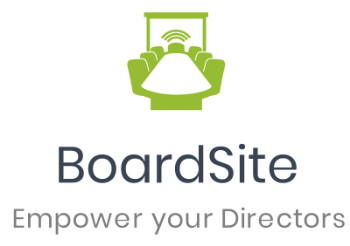A well-run board meeting doesn’t just happen, it starts with a clear, thoughtful agenda. Whether you’re running a nonprofit board, startup advisory board, condo strata council, or a governing board for a professional association, the way you plan and structure your meetings can make all the difference.
An effective board agenda helps your team stay focused, make informed decisions, and actually get things done. A structured agenda is crucial in enhancing meeting productivity and ensuring a logical flow of discussion topics. It not only defines the meeting’s purpose but also addresses common challenges that can lead to unproductive sessions. For organizations using BoardSite, the right tools can turn a long, scattered meeting into a streamlined, productive session that respects everyone’s time.
Let’s look at how to build an efficient board meeting agenda, and how BoardSite supports every step.
Why Agenda Structure Matters Across All Types of Boards
Every board has different goals, but all benefit from clarity and structure. Here’s how:
- Nonprofit Boards need to stay focused on mission-driven outcomes, compliance, and fundraising updates.
- Startup and Advisory Boards often need to move quickly through strategy, performance, and funding updates.
- Strata Councils benefit from well-structured meetings that prioritize resident concerns and policy decisions.
- Professional and Trade Associations must balance governance, member value, and event planning.
No matter your board type, a scattered agenda leads to confusion, off-topic discussions, and unproductive meetings. That’s where BoardSite comes in.

How BoardSite Helps Solve Common Board Meeting Challenges
Boards often face similar pain points:
- Agendas that are emailed at the last minute
- Scattered documents and version control issues
- No clear record of decisions made
- Meetings that go off-topic or run long
BoardSite was designed to solve these problems with a clean, intuitive platform. Key features that improve meeting efficiency include:
- Built-in Agenda Templates: Easily create repeatable agendas and customize them by board type.
- Document Attachments: Add files directly to agenda items so everyone has the context they need in one place.
- Role-Based Permissions: Limit who can edit versus view agendas, keeping things tidy and secure.
- Meeting Minutes & Action Items: Take notes directly in the app and assign tasks on the spot.
- Automated Reminders & Calendar Sync: Make sure everyone comes prepared and on time.
With everything organized and in one location, board members stay informed and meetings stay on track.
A Simple, Efficient Board Meeting Agenda Structure
Here’s a time-tested structure that works for most boards, especially when using a tool like BoardSite:
Building Effective Meetings
Effective meetings are crucial for the success of any organization, and a well-structured board meeting agenda is essential for achieving this success. A good board meeting agenda helps to ensure that meetings are productive, efficient, and aligned with the organization’s strategic priorities. It provides a clear outline of topics to be covered, allocates time for each topic, and helps to keep the meeting on track.
Creating a Board Agenda
Creating a board agenda is a critical step in ensuring that board meetings are effective and productive. A well-crafted board agenda should include a clear outline of topics to be covered, allocate time for each topic, and provide relevant reports and materials for board members to review. The agenda should be distributed to board members in advance of the meeting to allow for careful consideration and preparation. In this section, we will discuss the key elements of a board agenda, including the call to order, committee reports, financial reports, and new business. We will also provide tips for creating a comprehensive board meeting agenda that meets the needs of your organization.
1.Call to Order (2–5 mins)
Start on time. The board chairperson should present the mission and vision statements to remind board members of the organization’s long-term goals. Acknowledge who is present and review the agenda. BoardSite lets you set the agenda in advance and track attendance right in the app.
2. Approval of Previous Minutes (5 mins)
Use this time to approve the previous meeting minutes to ensure accuracy and accountability. With BoardSite, these are already attached and ready to review.
3. Review of Action Items (5–10 mins)
Follow up on tasks assigned in the previous meeting is crucial for maintaining progress and effectively evaluating action items. BoardSite’s task tracking keeps everything visible and accountable.
4. Key Reports (15–30 mins)
This might include:
- Executive Director or CEO reports
- Financial summaries, including a financial review that allows board members to assess the organization’s financial performance by comparing budgets to actual revenues
- Committee updates
Attach reports to agenda items so they’re reviewed before the meeting, not during.
5. Strategic Discussion or Decisions (30–45 mins)
This is the heart of the meeting. Prioritize big-picture topics, motions, or issues that need discussion and decisions. Allocating time for strategic discussions and long-term planning during board meetings is crucial to ensure the board’s effectiveness in guiding the organization and fostering growth.
Use BoardSite’s built-in voting feature or add a poll if decisions need to happen asynchronously.
6. Decision Making and Board Governance
Decision making is a critical aspect of board governance, and a well-structured board meeting agenda can help to ensure that decisions are made in a thoughtful and informed manner. A comprehensive board meeting agenda should include time for discussion and debate, as well as opportunities for board members to ask questions and seek clarification. The agenda should also provide a clear outline of the decision-making process, including the roles and responsibilities of board members and the expected outcomes of the meeting. In this section, we will discuss the importance of effective decision making in board governance and provide tips for creating a board meeting agenda that supports this goal.
7. New Business (10–15 mins)
Cover any new items that weren’t on the original agenda. Some issues may be deferred to future meetings for better exploration and focus. Stay strict with time here to avoid running long.
8. Wrap-Up and Action Review (5–10 mins)
Summarize the meeting, confirm next steps, and set the next meeting date to ensure all board members are aware of future gatherings and can plan accordingly.
BoardSite can records action items and can send reminders to members afterward.
Best Practices for Board Meetings
There are several best practices that can help to ensure that board meetings are effective and productive. These include creating a comprehensive board meeting agenda, distributing the agenda to board members in advance, and providing opportunities for discussion and debate. The meeting should be facilitated by a skilled board chair who can keep the meeting on track and ensure that all topics are covered. The board secretary should also play a key role in ensuring that the meeting is well-organized and that all necessary materials are available.

Tips for Making the Most of Your Agenda
- Send agendas early (at least 3–5 days before the meeting) using BoardSite’s calendar invites.
- Assign time estimates to each section so you don’t get stuck on one item too long.
- Use agenda labels (info, discussion, decision) to signal the purpose of each item.
- Stick to the structure but leave space for flexibility if urgent matters come up.
Ready to Make Every Meeting Count?
Board meetings don’t have to be long or stressful. With the right agenda structure and the tools built into BoardSite, you can keep meetings focused, organized, and effective, no matter what type of board you’re running.
Want to see how it works? Explore BoardSite now or request a free demo to see how it can improve your next board meeting.
Use Effective Board Meeting Agendas For Successful Meetings
Well-structured board meeting agendas are essential for ensuring that board meetings are effective and productive. By creating a comprehensive agenda that includes a clear outline of topics to be covered, allocates time for each topic, and provides relevant reports and materials, you can help to ensure that your board meetings are successful and aligned with your organization’s strategic priorities. Remember to distribute the agenda to board members in advance, provide opportunities for discussion and debate, and facilitate the meeting with a skilled board chair. Following these best practices, you can help to ensure that your board meetings are effective, efficient, and productive, and that your organization is well-governed and successful.

